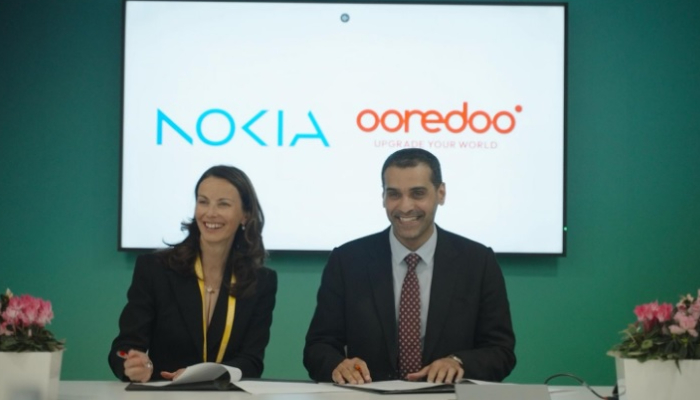This strategic partnership marks a significant step towards achieving the United Nations Sustainable Development Goals and reinforces the role of Ooredoo and Nokia as pioneers in the global movement towards more innovative and eco-conscious telecommunications.
Ooredoo and Nokia, have come together for their shared commitment to sustainable innovation by signing a Memorandum of Understanding (MoU) at the recently held Mobile World Congress. This pioneering partnership highlights Ooredoo and Nokia’s collaborative vision for fostering a more environmentally conscious industry, poised to make meaningful advancements in the future of telecommunications.
Sheikh Ali Bin Jabor Bin Mohammad Al Thani, Chief Executive Officer of Ooredoo Qatar, said, “This MoU is a cornerstone in our journey towards achieving the goals of Qatar’s National Vision 2030, emphasising the critical role of innovative technologies in creating a prosperous and sustainable future for Qatar and beyond. Through our joint efforts, we aim to lead by example and advance our nation by implementing key practices that not only benefit our customers but also the environment.”
Melissa Schoeb remarked on the agreement, “There is no green without digital. Connectivity is a vital enabler for decarbonisation and sustainability across every sector. But we must make sure that the products and services underpinning that connectivity are as energy efficient as possible. This fantastic new partnership between Nokia and Ooredoo will strengthen our already close relationship and explore the best ways to maximise the positive impact of telecommunications while minimising waste and emissions – and it is in line with Nokia’s strategic aim of developing sustainability into a competitive advantage. I can’t wait to get started.”
By combining their strengths, Ooredoo and Nokia are set to deliver impactful solutions that meet the evolving needs of the market while contributing positively to the environment and society as a whole. The two tech titans will also cooperate to improve circular economy practices, such as the reuse, recycling, and refurbishment of legacy hardware, to maximise the value of products through to the end of their life cycle.

